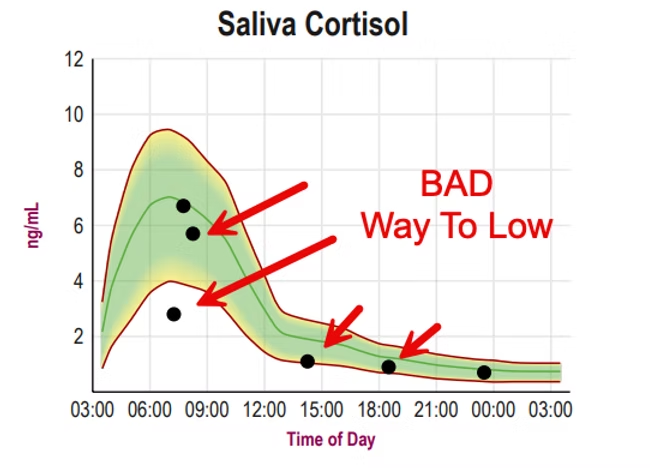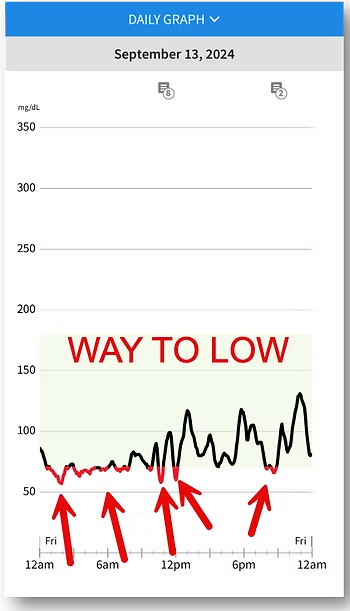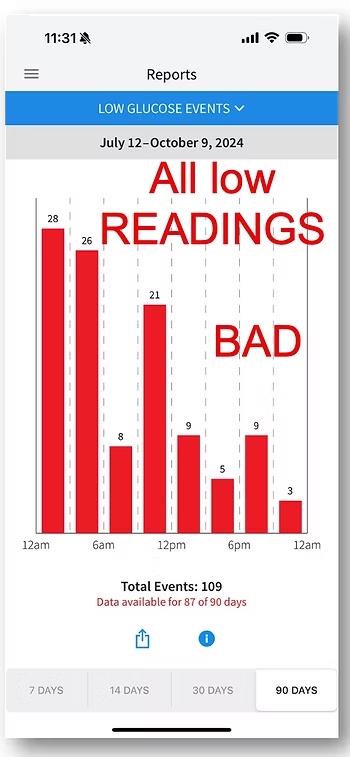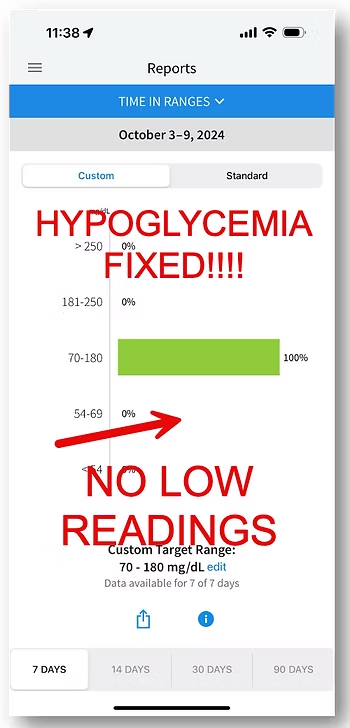If you’ve been battling hypoglycemia and no doctor seems to have the answers, you’re not alone. Today, I’m going to share an incredible case study of a client who suffered from severe hypoglycemia and how we turned things around for her. This will give you hope, especially if you’ve been frustrated by doctors not solving your problem.
Hypoglycemia happens when your blood sugar drops too low. For optimal health, I like to see my clients’ blood sugar between 85 and 120, with or without food. Anything below 85 can lead to hypoglycemia symptoms, though the medical system typically recognizes hypoglycemia at 70 or below.
If you’ve never checked your blood sugar and are struggling with a chronic condition, this is one of the easiest things to rule in or rule out. It’s one of the low-hanging fruits I always check for in my clients because catching hypoglycemia is easy—if you know what to look for.
The symptoms of hypoglycemia can be overwhelming and can make you feel terrible. Here are some common signs:
- Sweating
- Chronic hunger
- Blurred vision
- Dizziness
- Headaches
- Irritability
- Shaking (especially when hungry)
- Fatigue
- Anxiety
More severe cases can cause dysautonomia, where your nervous system starts misfiring due to lack of glucose. This can happen if you’ve had a concussion, traumatic brain injury, or simply if your brain isn’t functioning well.
If these symptoms sound familiar and you haven’t had your blood sugar checked, it’s time to start. A simple blood sugar test can help determine if hypoglycemia is at the root of your problems.
Case Study: Turning Hypoglycemia Around
Let’s dive into the story of one of my clients who came to me with severe hypoglycemia. She had gone to multiple doctors, but no one could fix her problem. Along with hypoglycemia, she also had:
- Weight gain
- Thyroid nodules
- Hormonal imbalances
She tried all sorts of treatments like IV therapy and expensive supplements, but nothing worked. Why? Because her blood sugar was never stabilized. Hypoglycemia was the root cause of all her other symptoms.
Continuous Glucose Monitoring (CGM)
We started by tracking her blood sugar using a Continuous Glucose Monitor (CGM). This device records blood sugar levels every minute, giving us detailed insights into her glucose fluctuations. You don’t need a CGM to check your sugar levels—you can use a basic glucose meter from Amazon for $20.
Here’s what we found: Her blood sugar was dropping below 70 for large parts of the day, especially during the night. She was in a hypoglycemic state roughly one-third of the time. And remember, anything below 85 is too low for optimal function.
Step-by-Step Treatment Plan
To fix her hypoglycemia, we created a custom treatment plan. This wasn’t a cookie-cutter solution, but a tailored approach designed specifically for her.
Here’s what we did:
1. Dietary Adjustments:
- 150 grams of protein per day: Meat and fruits without seeds were the focus of her diet for 6-8 weeks. This helped stabilize her blood sugar.
- No carbs before bed: Only a protein and fat snack, to avoid blood sugar spikes followed by dips during the night.
2. Physical Medicine:
- Chi machine and gut massage: These techniques help stimulate the pancreas and support insulin production.
- Red light therapy: Applied to her stomach and back to normalize gut function and improve pancreas health.
3. Supplements:
- Magnesium: A magnesium powder sipped throughout the day to support over 400 enzymatic reactions in the body.
- Fiber: Added to help normalize blood sugar levels.
- Electrolytes: To maintain balance in her system.
- Adrenal support supplements: Strengthened her adrenal glands, which were also contributing to her hypoglycemia.
The Results: Stabilizing Blood Sugar and Feeling Better
After two weeks on this program, the results were amazing. Her blood sugar stabilized, and she was no longer experiencing those dangerous dips below 70. Her energy improved, her mind was clearer, and she felt more vibrant and alive.
We continued to monitor her progress, and as her blood sugar remained stable, her symptoms improved dramatically.
Why a Polytherapy Approach Works
The key to her success was a polytherapy approach—meaning multiple therapies aimed at supporting her unique physiology. One therapy alone wouldn’t have solved her problem, but by combining dietary changes, physical medicine, and supplements, we were able to get to the root of her hypoglycemia and address it effectively.
Take Control of Your Health
If you’re suffering from hypoglycemia or any chronic condition and no one seems to be helping, don’t lose hope. It’s crucial to work with a provider who can tailor a plan specifically for you, someone who understands how to uncover the root cause of your problem.
You don’t have to live with hypoglycemia or continue jumping from doctor to doctor. By addressing the basics—like blood sugar—you can unlock your body’s potential to heal. Remember, where there’s help, there’s hope.
Frequently Asked Questions (FAQ)
For optimal health, blood sugar should ideally be between 85 and 120 mg/dL. While the medical system often defines hypoglycemia at 70 mg/dL or below, levels below 85 can already cause symptoms and are considered suboptimal for proper bodily function.
Symptoms can be overwhelming and include sweating, chronic hunger, blurred vision, dizziness, headaches, irritability, shaking (especially when hungry), fatigue, and anxiety. In severe cases, it can lead to dysautonomia, where the nervous system misfires due to a lack of glucose.
Hypoglycemia can be the root cause of many other frustrating health issues, such as weight gain, thyroid nodules, and hormonal imbalances. If blood sugar is never stabilized, other treatments like IV therapy or supplements may fail to work because they aren't addressing this foundational problem.
Success came from a tailored, polytherapy approach. This combined multiple strategies: dietary adjustments (high protein, no carbs before bed), physical medicine (chi machine, red light therapy), and specific supplements (magnesium, fiber, electrolytes, adrenal support). A one-size-fits-all solution was not effective.
You can use a basic glucose meter from Amazon for around $20. For more detailed insights, a Continuous Glucose Monitor (CGM) records levels every minute, revealing patterns—like dangerous overnight dips—that a single finger prick might miss. Tracking is the first step to understanding the problem.











